- Sri Lanka has recorded over 50 species of seabirds — birds that spend much of their lives at sea — within its territorial waters, including several long-distance migratory birds that travel thousands of kilometers across oceans.
- As observation of seabirds is challenging, only a small group of Sri Lankan birders have focused on this unique group. In the past decade, seabird studies in the island have seen a notable revival, led by enthusiastic young birders.
- Among last year’s remarkable observations is the sighting of a grey-headed albatross off Sri Lanka’s northern coast, marking the first-ever record of the species north of the equator, well beyond its usual Southern Ocean range near Antarctica.
- World Seabird Day, observed every year on July 3, commemorates the tragic extinction of the great auk, marking the last known pair of which was killed on that day in 1844 and highlighting the vulnerability of seabirds and the urgent need for their conservation.
COLOMBO — Young birder Lahiru Walpita begins most of his days at dawn by scanning the skies for seabirds along the coastline in northern Sri Lanka. In July 2024, during one of his routine beach surveys, Walpita noticed a large bird trailing a fishing vessel. It circled gracefully with wings outstretched, before vanishing into the horizon, he says, just long enough for him to capture a few photographs. From its shape and size, he had a hunch about its identity, and consultations with experts confirmed it was a grey-headed albatross (Thalassarche chrysostoma).
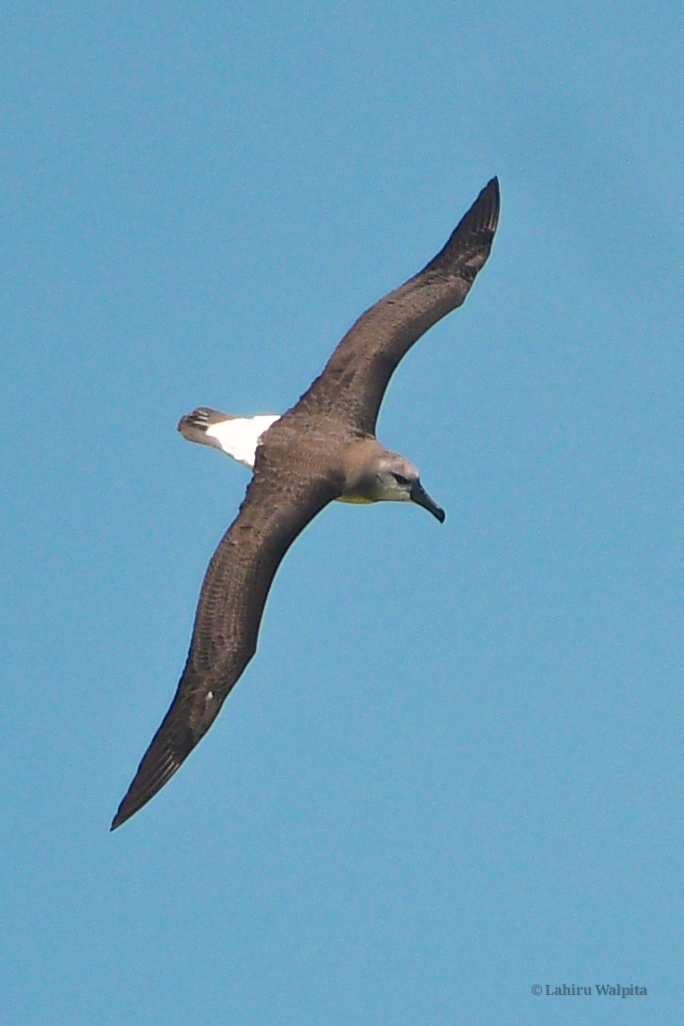
This marked a groundbreaking moment — not only was it the first-ever albatross recorded in Sri Lankan waters, but also the first confirmed sighting north of the equator, says ornithologist Sampath Seneviratne, a professor of zoology at the University of Colombo. “These albatrosses typically dwell in the Southern Ocean around Antarctica and rarely stray far from their home range. This is a truly remarkable observation,” he tells Mongabay.
Over the past few years, Walpita’s diligent ocean-watching — especially around Mannar Island in northern Sri Lanka — has led to sightings of elusive seabirds such as the Arctic tern (Sterna paradisaea), tropical shearwater (Puffinus bailloni) and Jouanin’s petrel (Bulweria fallax). During his beach surveys, Walpita has rescued over 150 pelagic birds. He has also collected over 60 dead pelagic birds that he sent to Seneviratne’s lab at the university for further scrutiny.
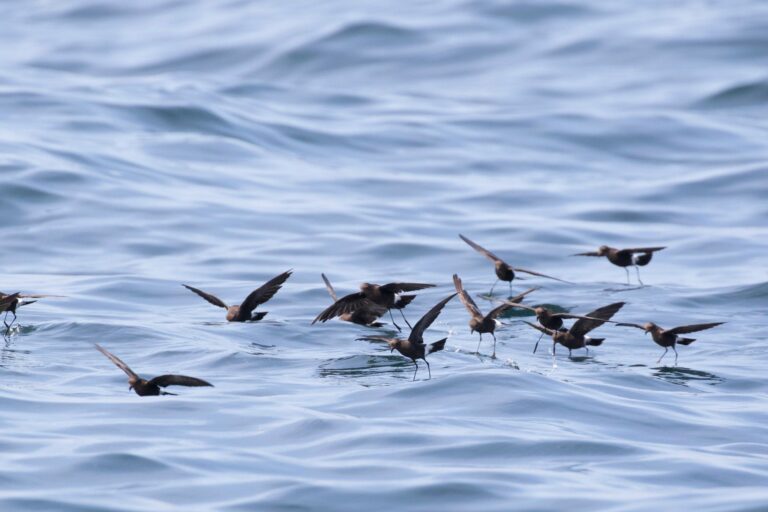
Increasing interest in pelagic birds
“I was initially more into butterflies,” Walpita tells Mongabay. “About five years ago, I developed a serious interest in seabirds. The support and guidance from experienced birders who have specialized in seabird identification encouraged me.”
This newfound enthusiasm isn’t limited to Walpita in Mannar. Across Sri Lanka, seabird watching is experiencing a revival. “Unlike in the past, pelagic birding trips are now being organized and the participation is growing,” says Kodikara Arachchi Moditha, a hydrogeologist who dedicates much of his time to ornithology. These trips often piggyback on whale watching boat operations, providing birders access to open ocean habitats, he says.
Interestingly, stormy weather, which hinders most other forms of birding, is ideal for seabird watching, as turbulent winds push oceanic species closer to shores. “On such days, even beach-based observations can be rewarding,” Moditha says. During such stormy weather, he adds, exhausted seabirds are sometimes found resting on land or, sadly, found dead.
The growing interest among younger birders is promising, according to veteran ornithologist Sarath Kotagama, ornithologist and former chair of BirdLife Asia. “Seabirds aren’t as colorful as forest birds and are often just black and white. Many species look quite similar and differ only in subtle characteristics, making identification difficult as they move fast,” he says. Moreover, seabirds roam vast oceans, making it harder to track and study them.
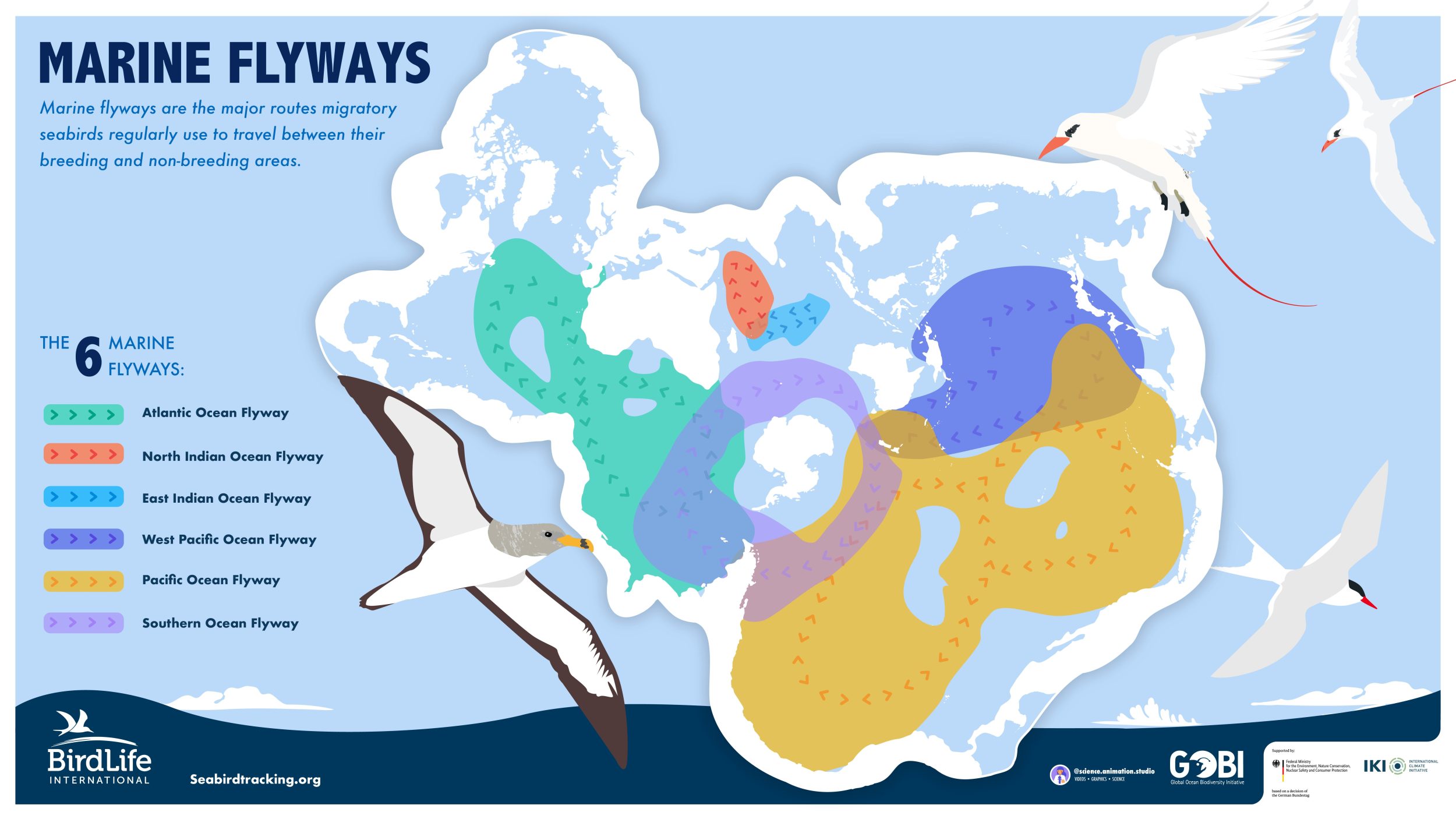
Rich seabird legacy
Seabird watching is possible during pelagic tours, both through boat-based observations and land-based observations from the beaches. However, the boat tours are limited due to the rough seas during the monsoon, and land-based studies require immense patience and favorable vantage points, Kotagama says.
Despite these hurdles, Sri Lanka still has a rich seabird legacy, thanks in part to Rex Ian de Silva, a renowned ornithologist with a passion for seabirds. Starting in the early 1970s, de Silva conducted years of observations from Colombo’s shoreline using tripod-mounted binoculars. De Silva’s long-term observations revealed that Sri Lanka’s west coast turns into a seabird migratory corridor during the southwest monsoon and inter-monsoonal periods.
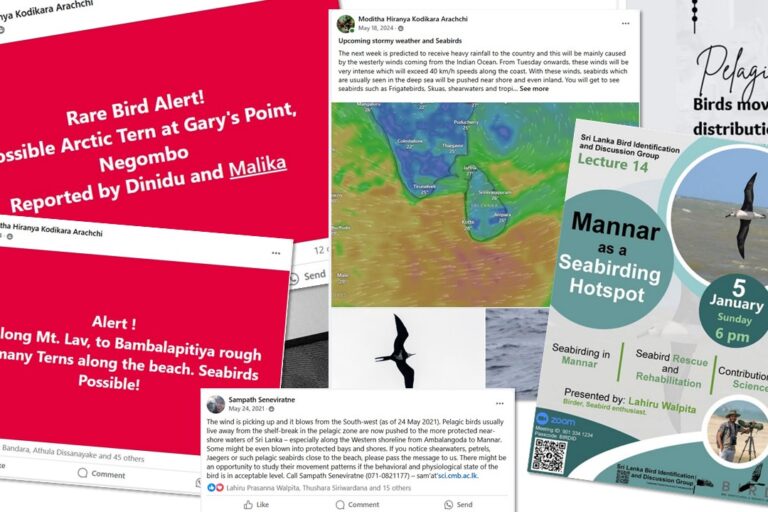
His 13-year study found a mass-migration of bridled terns (Sterna anaethetus), which takes place during the southwest monsoon. This migration, which usually begins around June-July and continues until October-November, is spectacular to watch, with as many as 400,000 birds flying southwards during daytime and well within sight of land in favorable years, according to De Silva.
De Silva tells Mongabay that a less spectacular but equally interesting phenomenon is the southward migration of flesh-footed shearwaters (Puffinus carneipes), in September-October. These birds, he says, leave their breeding grounds in southwestern Australia every May and embark on a lengthy “continuous migration” that takes them north and west towards the Arabian Sea and thence southwards past Sri Lanka, and finally back to their homes in time for the next breeding season.
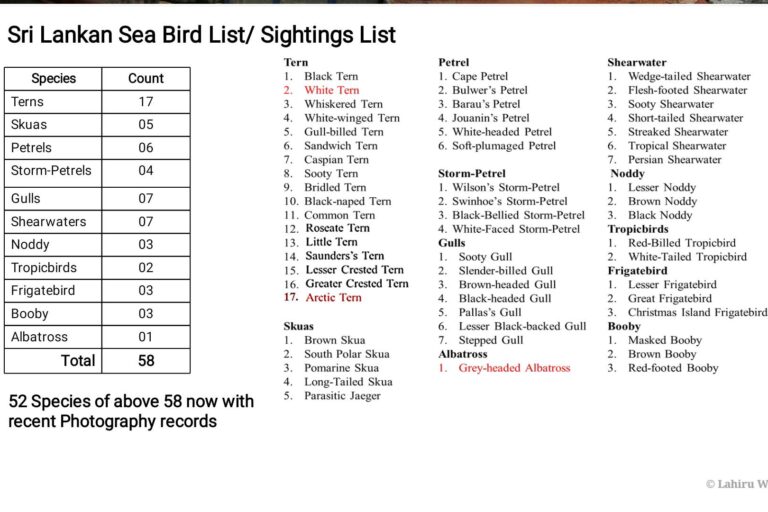
Rare underwater encounters
De Silva, also a professional diver, says he has also had rare underwater encounters with seabirds such as the red-footed booby (Sula sula) and the greater crested tern (Thalasseus bergii), which he observed diving as deep as 6-7 meters (20–25 feet) in search of prey.
In 2023, BirdLife International officially declared six global marine flyways, including the North Indian Ocean Flyway — the one closest to Sri Lanka. De Silva says he believes there’s still much to uncover and encourages today’s birders to build on earlier work. “For instance, I estimated flight speeds with basic tools like a stopwatch and binoculars. Modern tech can yield far more precise data,” he adds.
Other researchers, such as BirdLife International’s senior advisor Gary Allport, also contributed significantly to local seabird knowledge. The pelagic observations of Allport and colleagues found a migratory pathway of great skuas (Stercorarius skua) over the island nation. Satellite tracking of seabirds breeding on Mauritius’ Round Island and other Indian Ocean islets has revealed that many travel over Sri Lankan waters, even though they have not been directly observed.
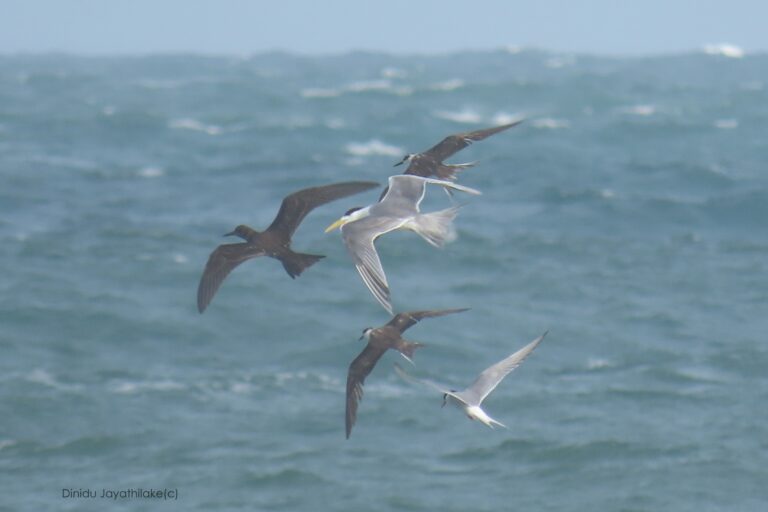
Potential in seabird tourism
A seabird is defined as a bird that is adapted to life in the marine environment, typically spending a significant portion of its life at sea, outside the breeding season. Some of these seabirds, called ‘true’ seabirds, spend most of their lives on the wing over the ocean, coming to land only for nesting, while other seabirds like terns and gulls use beaches and lagoons as well. A 2006 IUCN publication Fauna of Sri Lanka lists 54 species of seabirds, though current estimates suggest the true number is closer to 60 species, according to de Silva.
“Seabirds are truly fascinating, yet only a handful of birders seem drawn to them,” notes veteran birder Lester Perera, another passionate observer of seabirds. For example, he says, the Arctic tern, known for having the longest migration distance in the animal kingdom, traveling from the Arctic to the Antarctic and back, covering nearly 80,000 kilometers (49,700 miles) annually, was also recorded off Sri Lanka. “Sri Lanka has [the] potential to develop seabird tourism, which remains an untapped niche within our birding and eco-tourism offerings,” adds Perera.
Meanwhile, Kotagama stresses the need for extensive studies on seabirds across the country, highlighting that most seabird research has focused on the western coast, leaving other areas largely unexplored.
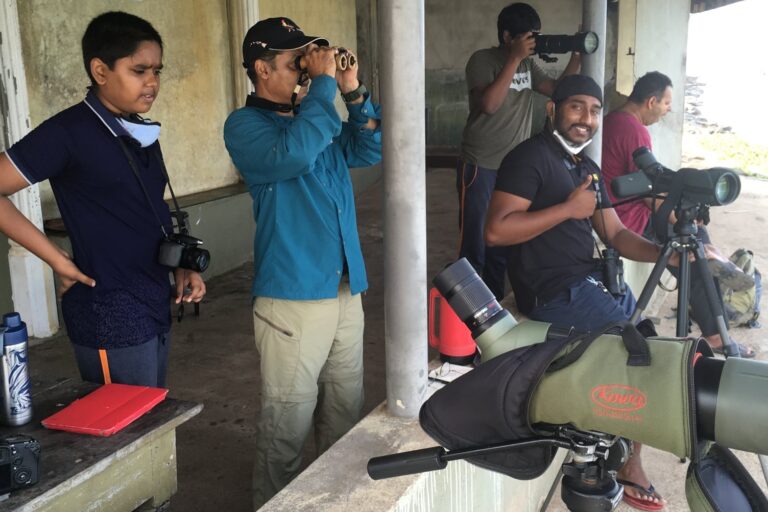
Long and surprising journeys
Satellite-tagging projects, meanwhile, have revealed surprising journeys of migratory seabirds where a Heuglin’s gull (Larus fuscus heuglini) visiting Sri Lanka was tracked as far as the Arctic, and a tagged brown-headed gull (Chroicocephalus brunnicephalus) was recorded crossing the Himalayas, the highest mountain range in the world.
Despite their resilience, seabirds face serious threats. Getting caught as bycatch in commercial fisheries often results in birds’ accidental deaths. Plastic pollution poses another major risk, with many seabirds ingesting debris mistaken for food. And climate change is shifting oceanic currents and food availability, disrupting the delicate balance of the birds’ migratory and breeding patterns, Senevirathne says.
To raise awareness about these challenges, World Seabird Day is celebrated annually on July 3. The date was chosen to mark the tragic extinction of the great auk (Pinguinus impennis), a flightless seabird last seen alive on July 3, 1844. The day aims to honor this loss and spotlight the urgent need to conserve the world’s remaining seabird species and their marine habitats.
Banner image: A flock of terns on floating wood at the sea. Image courtesy of Gary Allport.
Citations:
Panagoda, G., Wijethunge, I.K., Zhang, B., Meng, F., Liu, Y., Kotagama, S., Mundkur, T., Balachandran, S., Cao, L., & Seneviratne, S.S. (2025). A transcontinental migratory passage linking the Indian Ocean with the Arctic Ocean: Migration of Heuglin’s gulls from tropics to Arctic. Biotropica, 57(3). doi:10.1111/btp.70045
Walpita, L., & Arachchi, M.H. (2024). The grey-headed albatross Thalassarche chrysostoma from Sri Lanka. Indian Birds, 20(5). Retrieved from indianbirds.in/wp-content/uploads/2024/11/IB_20_5_Walpita_Arachchi_GreyheadedAlbatross.pdf
De Silva, R.I. (2020). Seabirds of Sri Lanka. Wildlife & Nature Protection Society, 28(28-29). Retrieved from www.researchgate.net/publication/344309764_Seabirds_of_Sri_Lanka
